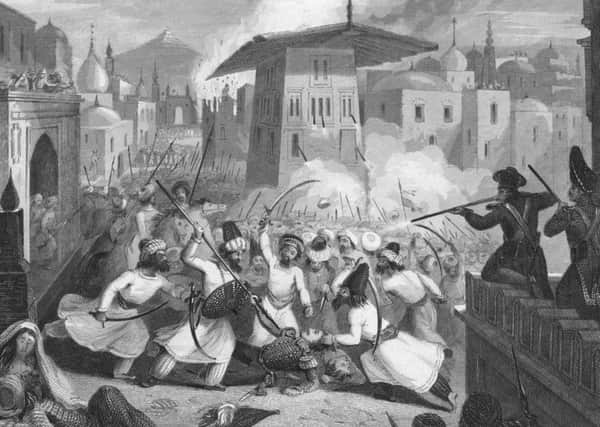Book review: Sikunder Burnes, by Craig Murray


He went to India at an age when we now keep boys in school. He applied himself to the study of Hindustani and Persian, learning to read and write both fluently. He had a mathematical bent and a facility for statistics – “the engine of British India”, according to Murray. He taught himself surveying, and his mastery of this craft contributed to the extension of British influence and power in northern India. His work secured him the Gold Medal of the Royal Geographical Society; he was elected a Fellow of the Royal Society and knighted by William IV – all within a dozen years of leaving Scotland.
Burnes is popularly associated with “the Great Game”, the first Cold War struggle between Britain and Russia on the North-West frontier of British India. It centred on Afghanistan, each power seeking influence, even control of that unruly country. Burnes showed a better understanding of the Afghans and of the limits of what might be achieved than his superiors in India or (of course) the government in London. The politics of Afghanistan were tortuous, perhaps even more so then than we have discovered them to be in the last 30 years. Murray describes them in detail and with sympathy.
Advertisement
Hide AdIn the end, Burnes’s advice was disregarded, the wrong policies pursued, and he was murdered in a mob in 1841. This led to the First (disastrous) Afghan War. The government in London, seeking to exculpate itself, first refused to publish Burnes’s despatches, then, under pressure in Parliament, did so only in a redacted form. Murray criticises this sharply and with justice.
His research has been prodigious, both in libraries and on foot. He knows a huge amount about Burnes’s life and work, and like many biographers today is reluctant to leave anything out. This doesn’t make either for easy reading or for a clear understanding on the reader’s part. Judicious selection, which requires omission, is a necessary element of the biographer’s craft. This is a fascinating book, but it would have been a better one if the author had practised some self-denial. As it is the narrative line is too often blurred, the book too congested. It would also have helped the reader if the publishers had provided more and better maps.
Murray has also “tried to give full weight to two major aspects of the lives of British rulers in India – sex and freemasonry – to which most historians turn a blind eye”.
There were few British or European women in India in Burnes’s time. So he, like most of his fellows, had Indian mistresses or concubines, and there were often children from these liaisons. Such relationships subsequently came to be frowned on. The 1857 Mutiny damaged race relations and steam ships brought British women in search of a husband to India. Alexander Burnes’s time there coincided also with the decision taken at the prompting of the historian Lord Macaulay that an Indian elite should be given a western education so that they might become “brown Englishmen”. Few imperial servants then took as deep and sympathetic an interest in Indian languages and culture as Alexander Burnes had.
Murray also devotes a chapter to Freemasonry. All the Burnes family were admitted to the Craft, and Alexander’s elder brother, James, a surgeon, achieved high rank in both Masonic lodges and the revived Order of Knights Templar. The Masonic connection may have helped further Alexander’s career. It is interesting stuff, all the more so because Murray stops well short of endorsing the “Da Vinci Code” fantasies; interesting, but, I confess, baffling. What was it all really about? ■
*Sikinder Burnes by Craig Murray is published by Birlinn, 437pp, £25